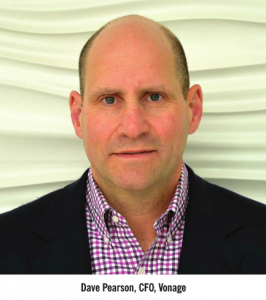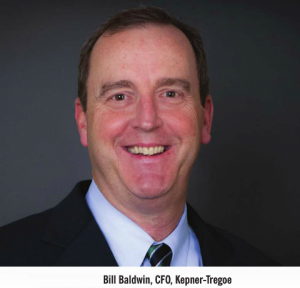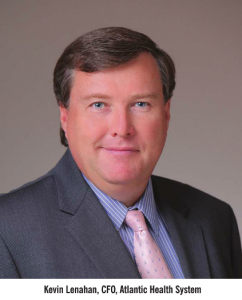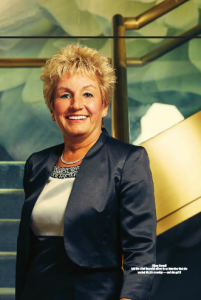As Seen in CFO Studio Magazine Q1 2017 Issue
CFOs SAY ELECTION, OTHER ISSUES COMPLICATE YEAR-END PLANNING
-BY MARTIN DAKS-
In late Q3 2016, as CFOs worked on their capital budgets for the upcoming year, they faced a trifecta of uncertainties: a so-so economy, lingering concerns about possible interest rate hikes, and an election that presented a choice between two starkly different candidates. Of course, that was on top of the usual concerns about competition, regulation, and other issues that keep CFOs on their toes. To see how financial executives are dealing with these multiple issues, CFO Studio spoke with chief financial officers from businesses that represent three significant industries: technology, health care, and consulting. From taxes to strategy, they shared their thoughts about 2017.
“Fortunately, the state of the economy has not affected our capital planning,” says Dave Pearson, CFO of Holmdel, NJ–based Vonage, a leading provider of cloud communications services for consumers and businesses. “We’re continuing to commit capital into our unified communications cloud segment. We’re basically putting in as much capital as we can effectively deploy.”
Vonage’s expanded focus from Internet-based telephone services to cloud communications services for both the consumer and business markets gives the company new capital needs. Pearson notes that Vonage’s consumer network doesn’t consume much cost, “Since it’s already in place and we can basically maintain it,” so the cash it generates frees up funds to invest on the business side. “Currently, the cloud unified communications market has less than 20 percent penetration, so there’s a lot of room for growth,” he adds.
Pearson’s budget-planning plate is filled with a variety of other issues, including rising health care costs, which continue to be a big issue for many businesses. He says Vonage is trying to rein them in with the company’s first-ever self-insurance plan. “We implemented it in 2016—with a backstop insurance plan that kicks in after a certain level —and so far it seems to be the right way for us to go. We plan on continuing the self-insured health plan in 2017.”
He’s also tracking interest rates, noting the likelihood of at least a slight increase in the benchmark prime rate in 2017.
“We’re prepared for that to happen,” Pearson says. “We have not hedged, but we are borrowing at LIBOR [a benchmark interest rate index] plus 3 percent, so we feel good about floating right now. We do expect further rate hikes and have built that scenario into our capital plans.”
He doesn’t believe that the outcome of the presidential race will change Vonage’s day-to-day operations, either. “I don’t think that the difference between a Democrat or Republican as president will be too dramatic for businesses,” Pearson explains. “I do hope, though, that Congress and the next president can work together on general business issues, particularly on a plan that would reduce the tax rate on repatriated foreign earnings [which are currently taxed at about 35 percent].”
Challenging Times Globally
When Bill Baldwin, CFO of the Princeton-based multinational management consulting firm Kepner-Tregoe, worked with his team on the 2017 capital budget, they took a global view.
“As CFO I work with the CEO, and with five regional worldwide managing directors, each of whom works with five worldwide controllers,” he explains. “We also work with service focus leaders who oversee services, operations, and general training. We get input from key functional leaders in information technology, marketing, and product development. So there’s a comprehensive feed of information, which is important.”
Kepner-Tregoe’s initial 2017 budget plans were distributed to key executives in mid-September 2016. They have been reviewed and refined—and will continue to be worked on until mid-December, when the final proposals will be presented to the Board of Directors for their consideration.
During that review period, Baldwin and CEO Chris Geraghty visited the company’s remote offices to review and polish the firm’s three-year financial and strategic plans.
“We continue to see challenging times,” he says. “It’s not just the U.S. presidential election, but there are issues with economies throughout the world, including the British exit from the European Union, and unrest in Southeast Asia.”
Thus, his firm has to consider a variety of global political, social, and economic factors. “Of course, it’s not just us,” he adds. “In 2017 and beyond, the clients that we work with also have to deal with issues like the changing workforce, as baby boomers retire and millennials enter the ranks of management.”
Addressing the Workforce Mix
These and other kinds of change mean that companies have to be prepared to innovate when it comes to their own work and management practices, and Baldwin says Kepner-Tregoe is gearing up to help them.
“We’ll probably add some people, but as part of our budget considerations we continue to fine-tune our workforce,” he reports. “We’ve been balancing the mix between full-time employees and independent contractors. We used to have more full-timers, and expect to add to them in 2017 and beyond, but we are continuing to balance the mix.”
As a professional services firm, Kepner-Tregoe is not as capital-intensive as some other categories of businesses. “Most of our hard assets are laptops and software,” explains Baldwin. “But because we maintain leased offices around the world, we’ve been reviewing our real estate footprint.”
In a bid to reduce lease costs, he says the firm may consolidate space, adding that one option is to let more employees, especially those in support functions, work from home.
Rising health care costs prompted Kepner-Tregoe, in 2011, to move its 48 U.S. employees into a PEO, or professional employment organization, a third-party firm that becomes the employer of record, maintaining employee benefits, payroll, workers’ compensation, and other services. “Becoming part of a larger firm enabled us to obtain better benefits and overall pricing,” Baldwin says. “We pay 85 percent of our employees’ health care premiums, but we had to find a way to reduce the costs.”
Baldwin is also concerned about the sluggish pace of economic growth —Gross Domestic Product rose at an anemic rate of 1.1 percent in the second quarter of 2016, according to the most recent data released by the federal Bureau of Economic Analysis. “Businesses need to be more innovative to grow,” says Baldwin. “But many industries have not been embracing innovative change. We need tax and regulatory reforms to help create growth and drive innovation.”
He would also like to see a reduction in the federal corporate tax rate, which he notes “is much higher than international rates.” He suggests a lower rate would spur more companies to repatriate profits and increase their domestic investment. It’s an issue of growing concern, since published reports indicate that U.S. companies have parked more than $2 trillion overseas to shield the profits from high U.S. taxes.
Baldwin believes the outcome of the presidential election will likely have a big impact on the economy.
Both candidates suggest more action on the corporate tax front. In a bid to bolster the economy, Republican candidate Trump has proposed a low, 10 percent tax on corporate profits that are repatriated back into the U.S. According to Clinton’s website, Hillary will close tax loopholes like inversions that reward companies for shifting profits and jobs overseas, but her proposals do not address repatriated profits directly.
“The candidates’ approaches to business and economic stimulus are starkly different,” Baldwin asserts. “A Democrat as president will continue some or many of Obama’s current policies. The question is whether you’re happy with the performance of the U.S. economy over the past seven or so years, or do you want change to stimulate economic activity?”
Despite the uncertain economy, Morristown, NJ–based Atlantic Health System— a not-for-profit health care organization that comprises six medical centers and hospitals, in addition to Atlantic Rehabilitation, and Atlantic Home Care and Hospice — continues to “make investments in our services, facilities, and employees to develop the infrastructure necessary to be successful for the future,” according to Kevin Lenahan, Senior Vice President and Chief Financial and Administrative Officer. “Our capital and budget plans are developed with the objective of creating a trusted network of caring to serve our communities and ensure every patient can access the right care, in the right place, at the right time, at the right quality, and at the right cost.”
But, even health care providers have to keep a close eye on their own health care costs, he adds.
“Internally, we are aligning our benefit structure with an emphasis on wellness. Our successful and nationally recognized Atlantic Accountable Care Organization is making strides to better manage and reduce the overall cost of care.”
As the company plans for 2017, Atlantic Health “will continue to manage its cost structure and look for opportunities to grow as health care reimbursement transitions from fee-for-service to value-based care,” Lenahan details. “We are building an economic engine able to support the infrastructure needed to provide high-quality, outcome-focused care. We will continue to recruit and retain highly qualified, talented staff.”
Head Count, Interest, Taxes
Atlantic Health System’s 2017 budget provides for more internal investment, he adds. “Our workforce planning analytics from 2013–2015 shows a steady increase in the number of hires. In 2015 we showed a 14 percent increase from 2014. For 2016, based on our hires to date and anticipated hires for the rest of the year, we project a slight increase. We continue to steadily recruit for new and replacement positions across the system. In addition, our internal hires continue to be strong and are trending about the same or a slight increase from 2015.”
Still, he’s concerned about the prospect of higher interest rates in the near future.
“I think interest rates will go up in 2017,” reports Lenahan. “Atlantic is preparing for an interest rate increase by taking advantage of current rates and going to market for a $225 million bond refinancing [in September].”
Lenahan is also closely monitoring tax issues in New Jersey, where hospitals have been roiled by cash-strapped municipalities’ and private citizens’ challenging their tax-exempt status — Atlantic Health System’s Morristown Medical Center among them.
“Atlantic Health System had supported the proposed legislation which would have provided much-needed clarity on the fair-share community service contribution from New Jersey’s not-for-profit hospitals to their host communities with predictability,” he says, referring to failed proposals like a fee-based formula of $2.50 per day per bed, or $250 per day for satellite facilities, in lieu of traditional property tax assessments. “We continue to work closely with legislators and the New Jersey Hospital Association to define a clear path on how hospitals and host towns can agree on a fair-share community service contribution. However, in its absence, Atlantic Health System has opted to begin this process with its own host communities, and has reached agreements in both Morristown and Newton.”
For CFOs who are annually asked to be their organizations’ financial navigators despite limited visibility, challenges like these simply represent the latest in a long list of obstacles they’re expected to overcome. But most CFOs would probably agree with Kepner-Tregoe’s Baldwin, who says the review, forecast, and planning that go into a year-end budget are a significant part of the task of creating positive growth.




